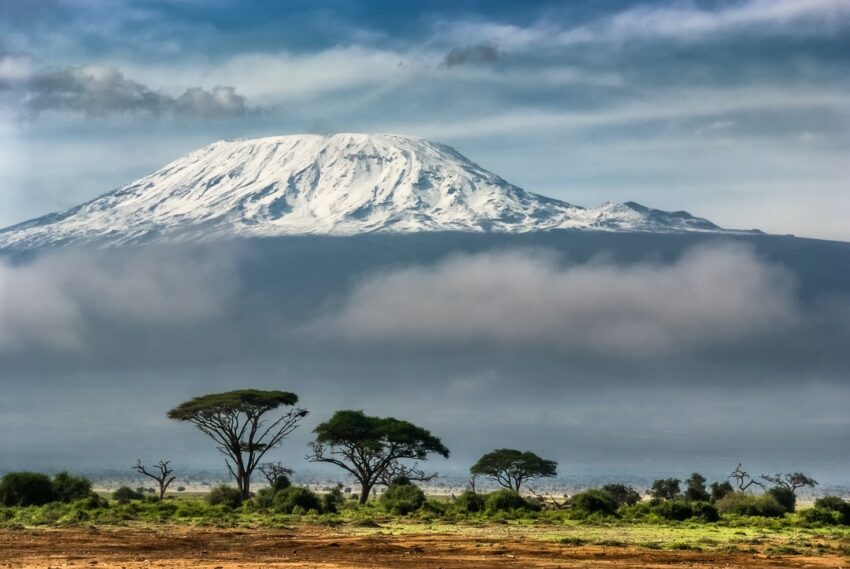Why Kilimanjaro Is a Great Mountain for Any Bucket List

Are you putting together a bucket list? You should consider putting this great mountain on the list.
Kilimanjaro is a volcano in Tanzania, East Africa, and is known for its glaciers and views of the surrounding landscape. It is the highest mountain in Africa, standing at 5,895 meters (19,340 feet). But what makes it a great mountain for adventure enthusiasts?
This article will discuss why climbing Kilimanjaro is a great mountain for any bucket list.
The Great Mountain Kilimanjaro
The volcano is the highest free-standing mountain in the world and is part of the “Seven Summits,” which contain the highest mountains on each continent.
The other six summits include:
- Everest (Asia)
- Aconcagua (South America)
- Denali (North America)
- Vinson Massif (Antartica)
- Kosciuszko (Australia)
- Elbrus (Europe)
Kilimanjaro is an active stratovolcano, which is a cone-shaped volcanic peak shaped by lava flows, ash, and pyroclastic flows.
The mountain’s name comes from the Kilimanjaro of the Chagga people and means “shining mountain” or “white mountain.”
The valleys of Kilimanjaro also are a sight to see, as they are home to some of the tallest trees in Africa.
In fact, Andreas Hemp estimates that the Entandrophragma excelsum found in one of the valleys reaches 81.5 meters and is about 600 years old.
Why Climb Kilimanjaro?
The challenge alone is enough to go, as it will test climbers to the very limits of their physical capabilities. But the unique combination of landscapes, wildlife, and the possibility of reaching Africa’s
the highest point is why Kilimanjaro should be on every bucket list.
Climbing Kilimanjaro is ideal for outdoor adventure enthusiasts looking for a challenging but rewarding experience. The journey to the summit is full of breathtaking landscapes, unique animal life, and breathtaking views.
To climb Kilimanjaro, people spend three days or more trekking to the summit. Most of the time spent climbing Kilimanjaro is on the Lemosho and Shira Plateau trails, which are just under the equator.
However, climbing enthusiasts aren’t the only ones that will enjoy the trek. Many trails are accessible for climbers of all levels.
History of Mount Kilimanjaro
Can you believe that the first European to see Kilimanjaro was Johan Ludwig Krapf, a German missionary? He and two other missionaries were the first to report Kilimanjaro to the western world.
Krapf viewed the mountain from the outskirts of the Serengeti plains in 1860. After his original report of the mountain, a British explorer was the first to attempt to climb it in 1888.
Since then, many explorers have battled the mountain of Africa.
Many have not survived the climb, though, so it’s essential to prepare for the climb. The mountain has also become a tourist destination for hikers around the world, so those who don’t necessarily want the challenge of climbing the mountain can still have a memorable experience.
Explorers hoping to climb the mountain no longer need to bring guides or porters, but they still might want to bring a guide. A guide can often provide historical knowledge of the mountain,
Culture Surrounding Mount Kilimanjaro
When you visit this great mountain, you’ll also learn about its culture. The native people of the area are known as the Chagga, and they offer a fascinating and educational experience.
The Chagga people, also known as the Wachagga people, are now one of the largest groups in Tanzania. However, colonization and missionaries altered the way of life of these powerful people.
Much of the traditions and spirituality have been lost since then.
Thankfully, some traditions and knowledge are passed down from generation to generation. For example, they are well known for their cultural dance that many members still practice.
The Chagga people believed in Ruwa, the mountain god that provided them with banana crops, sweet potato, and later on, coffee. This produce was often traded with beads and cloths.
Visitors will have the chance to watch a local cultural dance, take a trip to the Chagga’s local dispensary, and learn about the Kili Rose, a flower that only blossoms on Kilimanjaro.
Must-See Sights
Visitors should also take some time to admire the beautiful wildlife and scenery. The mountain is home to various animals and plants, including elephants and tropical forests, that cannot be found anywhere else in the world.
Some of the most stunning sights are found on the Shira Plateau, where you see a variety of animals and see the Mawenzi and Kibo peaks.
Besides climbing the mountain, tourists can enjoy plenty of other activities. These include safaris and cultural tours, perfect for visitors looking for more than just the hiking experience.
During the safaris, visitors will see various animals, some unique to the area. Other highlights for those that choose to take a safari include swimming in hot springs and visiting the Ngorongoro Crater, where you’ll have the chance to see a variety of hippopotamus.
Once you’ve reached the peak, though, you’ll be blown away by the fantastic view that stretches out before you.
The view comprises several different features, including the Shira Ridge, a white salt lake, and a variety of turquoise lakes.
During your descent, you’ll have the chance to see some of the most breathtaking sights the mountain has to offer.
Many climbers choose to camp on the mountain, where they can spend the night under the stars and see the sunrise from Africa’s highest peak.
Throughout the day, you may see clouds surrounding the peak, which will create your own unique experience.
Check Out Africa’s Highest Peak
Mount Kilimanjaro is a must add to your bucket list. The sights, experiences, and memories you will take away from the great mountain are ones that you never want to forget.
You can use this guide to help you plan your trip to Tanzania and use it as a helpful resource throughout your trip.
Are you looking for a guide to climb Kilimanjaro? Book with us now!